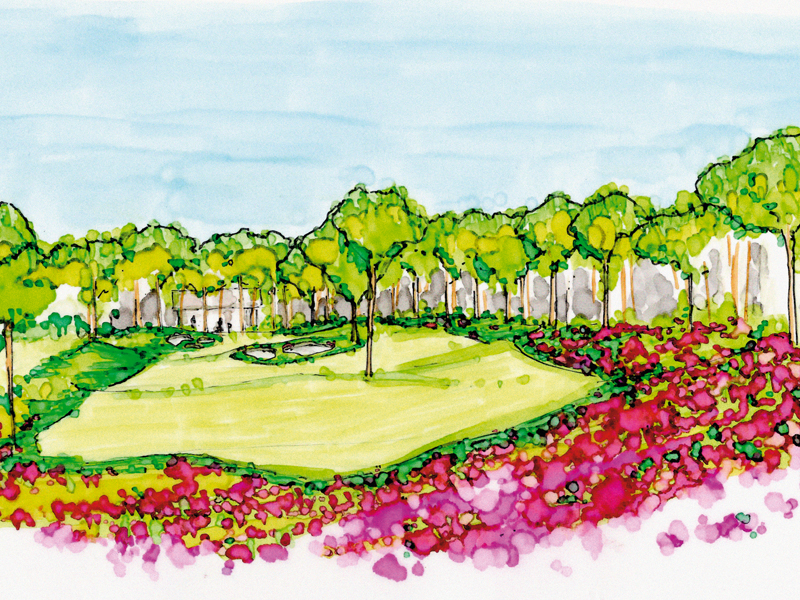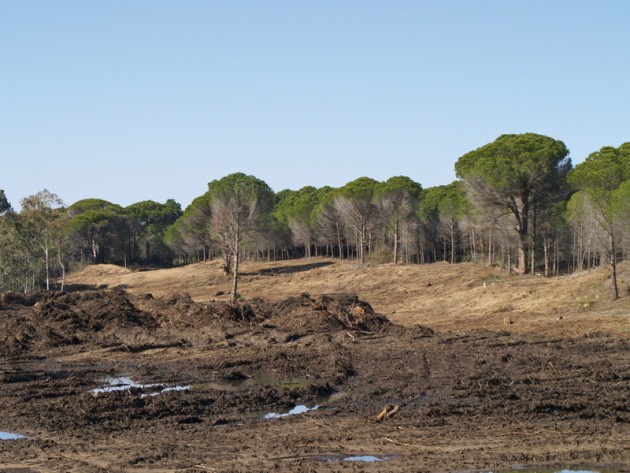A crash course in golf course design
Ever wondered about the golf course construction process? Read on...


Tim Lobb of respected architects Thomson Perrett & Lobb gives Golf Monthly a lesson in golf course design
A crash course in golf course design
We’ve all had the pleasure of playing a beautifully manicured course and may even have taken some time to admire the designer’s art. But few of us know the extent of the work required to build it or about the years of complex planning that will have taken place.
The site is right?
The most obvious factor when designing a course is finding the right piece of land and few companies know more about this than architects Thomson Perrett & Lobb, who have been involved in more than 200 projects in 30 countries. Fronted by five-time Open winner Peter Thomson, the three principal players have more than 75 years of design experience between them.
“Getting the right piece of land, which has characteristics that will enable a good course is vital,” says Tim Lobb (right). “And then it has to have good access and soils. It has to be of the correct size as well. We would say for 18 holes it would have to be a minimum of 150 acres of land that is not excessively sloping, wet or swampy.”
Before applying for planning permission – a process that can take more than two years – a preliminary golf course is “laid out” on paper. “You basically lay out all the golf holes in the fashion that they play. You have your starting and finishing points, the position of your clubhouse, the position of your maintenance facility and any roads that are required. It’s very important that it satisfies safety requirements as well. We can’t have golf holes too close to each other or close to boundaries.”
Related: the science behind the perfect green
Subscribe to the Golf Monthly newsletter to stay up to date with all the latest tour news, equipment news, reviews, head-to-heads and buyer’s guides from our team of experienced experts.
A design for life
The next step is to put the “strategy” into the course – a basic idea of the number of bunkers and their shapes, as well as early tee and green designs. “Then we start to do the detailed design, which is very fine contouring. We’d probably go to half-a-metre contour intervals on the fairway, and on the green we’d go to 12.5cm intervals.
The detailed design also includes the plan to show what grass is planted where and tree planting. Our company gets heavily involved in the concept for the landscape as it blends in with the golf course. We think it’s a very important relationship that is often overlooked by golf course architects. This normally takes about three months, full-time.”
The drawings are transferred to a computer and once construction begins the plan is replicated out in the field – at quite incredible levels of accuracy. “It’s quite amazing – you’re drawing something in two dimensions but you’ve got to think in three.”

Carya Golf Club's 18th hole during the construction phase
Cut and fill
Now the bulldozers are ready to move in, 2m-high poles are inserted in the ground at the tee locations, the “turning points” (275 yards down the fairway – approximately one shot away) and the middles of the greens. The bulk of the earthwork or “cut and fill” takes in the region of two months.
“Once the rough shaping is done we start to do drainage and irrigation which is a big mess. There are trenches everywhere and miles of pipe and cables for the irrigation system. That will also take a few months and then that’s all pushed back into place and smoothed off.”
Related: what does an agronomist do?
Once the greens and teeing areas have been constructed it’s time to plant some grass. “Out in Turkey it might take six to eight weeks – in a cooler climate a bit longer, maybe 12 weeks.”
Lobb says a “quick” course – including planning permission – can be completed in two years and he reckons he can personally spend up to 2,000 design hours, both on and off site, during a project.
I ask him how much it costs to build a golf course and he says design and construction will set the client back €4 million to €7 million for a good quality layout, although he admits this is very much a ball-park figure. “Not including the clubhouse. Sometimes the clubhouse is as much as the golf course, depending on the client.”

Nick Bonfield joined Golf Monthly in 2012 after graduating from Exeter University and earning an NCTJ-accredited journalism diploma from News Associates in Wimbledon. He is responsible for managing production of the magazine, sub-editing, writing, commissioning and coordinating all features across print and online. Most of his online work is opinion-based and typically centres around the Majors and significant events in the global golfing calendar. Nick has been an avid golf fan since the age of ten and became obsessed with the professional game after watching Mike Weir and Shaun Micheel win The Masters and PGA Championship respectively in 2003. In his time with Golf Monthly, he's interviewed the likes of Rory McIlroy, Justin Rose, Jose Maria Olazabal, Henrik Stenson, Padraig Harrington, Lee Westwood and Billy Horschel and has ghost-written columns for Westwood, Wayne Riley, Matthew Southgate, Chris Wood and Eddie Pepperell. Nick is a 12-handicap golfer and his favourite courses include Old Head, Sunningdale New, Penha Longha, Valderrama and Bearwood Lakes. If you have a feature pitch for Nick, please email nick.bonfield@futurenet.com with 'Pitch' in the subject line. Nick is currently playing: Driver: TaylorMade M1 Fairway wood: TaylorMade RBZ Stage 2 Hybrid: Ping Crossover Irons (4-9): Nike Vapor Speed Wedges: Cleveland CBX Full Face, 56˚, Titleist Vokey SM4, 60˚ Putter: testing in progress! Ball: TaylorMade TP5x